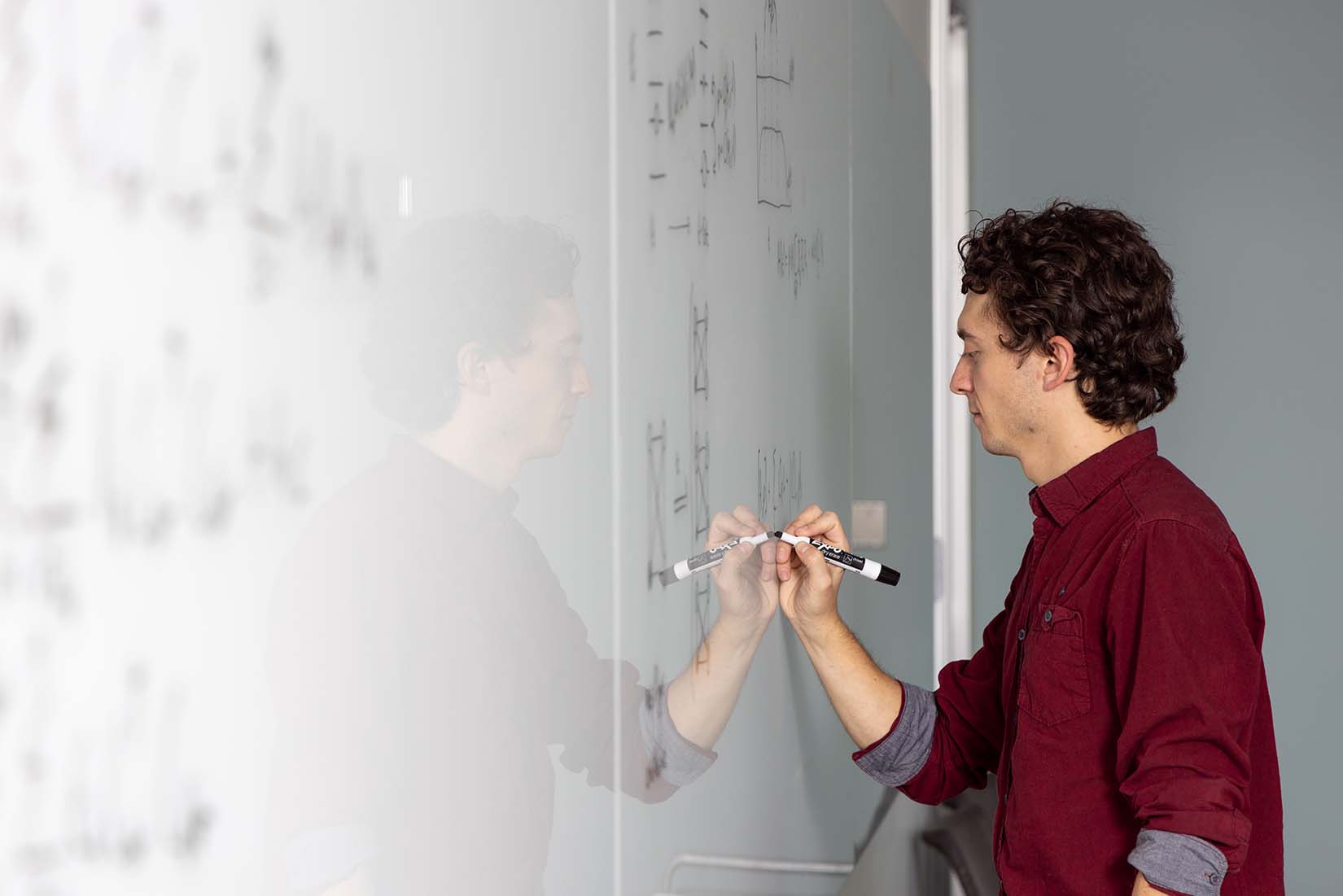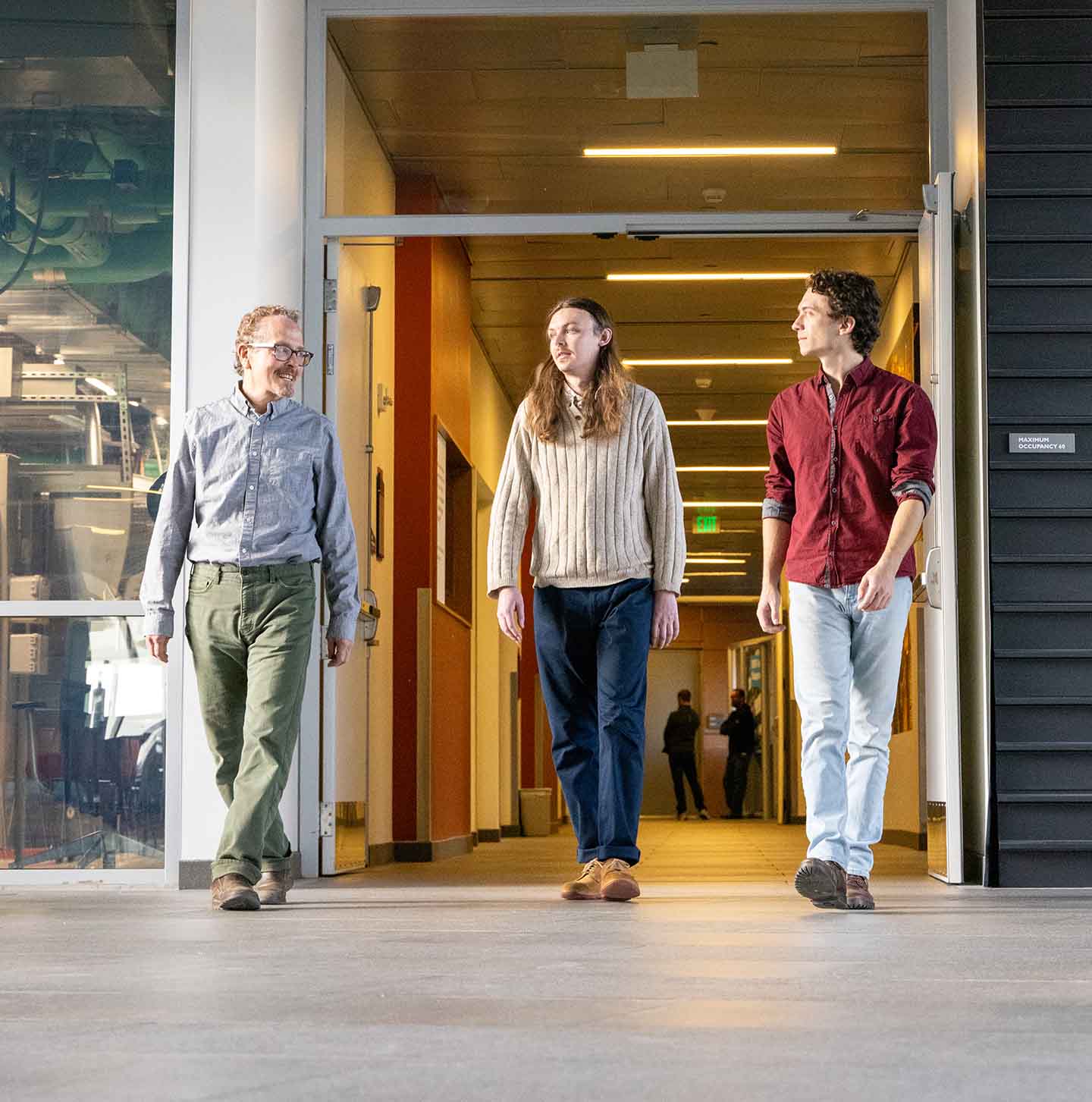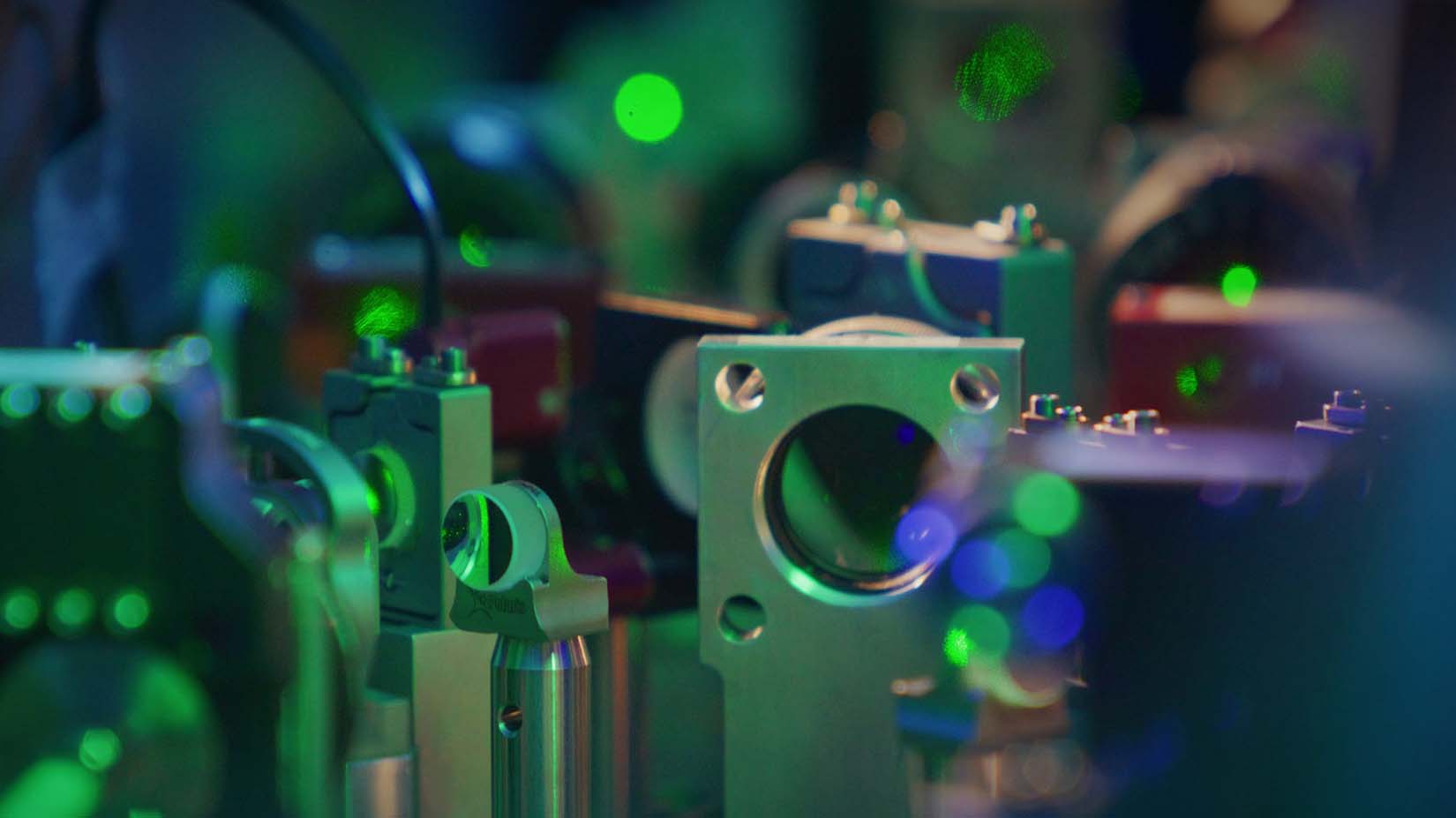Can Quantum Computers Handle Energy's Hardest Problems?
NREL Scientists Team With Local Companies To Benchmark the Benefits of Quantum Computers

Every week quantum computing hits a new milestone: more qubits, less errors, better readout of results.
But will these breakthroughs help solve the advanced computational problems facing energy, like how to model energy storage catalysts or ensure power grid reliability? That is what scientists at the National Renewable Energy Laboratory (NREL) want to know.
Working with local quantum companies, an NREL team is developing benchmarks for quantum computers on the problems that are important to energy science. The pursuit of benchmarks will allow NREL and industry to prioritize practical utility for the next generation of quantum software and hardware.
When the Qubits Are Ready, NREL Will Be Too
Advanced computing has a growing role in energy research. This is clear at NREL—where the new 44 petaflop supercomputer, Kestrel, renders solutions all day, every day—and it is clear in the eight-year-long U.S. Department of Energy Exascale Computing Project, which achieved 1 quintillion calculations per second.
But for the most complex problems, quintillions will not cut it: Those problems might have to be solved differently, and the prevailing hope is that quantum computers can take on the task.
“There are a lot of claims being made about quantum computing, but unless you have a computer that’s ready, many of these claims can’t be asserted with certainty,” said Caleb Rotello, a researcher at NREL.
Before NREL invests additional time and effort into next-gen quantum research, Rotello and team need more certainty: If they could know that a quantum algorithm has an advantage, then NREL and fellow labs could gauge when to get serious.
“The idea is to create application-oriented benchmarks that can test claims that are particularly useful to energy. Then, as the computers start to grow and become more trustworthy, we can test those programs,” Rotello said.

With its strange methods of superimposed and entangled states, quantum computing has theoretically been shown to provide potential speedups on valuable problems. For example, NREL emulated quantum calculations of molecular energies using a classical supercomputer. While NREL does not have a quantum computer of its own to test the benchmark algorithms, several computers are being developed nearby.
Help From a Quantum Hub
NREL is not alone in readying for quantum computing. Over 100 quantum companies and organizations are based in Colorado, New Mexico, and Wyoming, many within 30 minutes of NREL's campus, and they have formed a collaborative network that elevates the region to "Tech Hub" status according to the U.S. Economic Development Administration.
In July of 2024, combined federal and state funds of $127.5 million were announced for the hub, activating regional coordination to develop the next phase of quantum computing.
“Engagement with quantum computing companies and industry is valuable because we get to interface with the computers while they’re being developed and learn about how they process information, which is incredibly unintuitive,” Rotello explained. “And it’s valuable for the companies to see how people will use a computer when it’s ready.”
Quantum computers come in a variety of types, just like NREL’s research areas. Some use light, others use atoms, and those differences might suit them to certain applications. NREL’s back-and-forth with the computer makers could help to identify the best applications for each computer type.
But in these early days of error-prone quantum computers, when the simplest calculations barely rise above random noise, companies are still working on the fundamentals. Only once their computers are physically ready to run NREL’s benchmark problems, a wide range of energy research areas can then be transformed.

Two Famous Problems for Quantum Benchmarking
At the core of energy research, a handful of essential formulas are used widely and often. Perhaps quantum hardware could solve them faster.
“Quantum computers are only now beginning to emerge that are capable of providing key insights into phenomena relevant to energy technologies and their use,” said Wesley Jones, NREL’s principal scientist and group manager of complex systems simulation and optimization.
Given the limited size and level of noise in current machines, achievements are modest, characteristic of an early industry. Much work has been spent proving that basic calculations are even possible, but not much about whether and when the quantum hardware will be useful for applied applications.
With future improvements, quantum’s presumed superiority on certain problems could finally be proven in earnest.
“The idea of benchmark applications is to formulate the kernel of problems we care about, ideally in a way that won’t be reliant on specific quantum architectures,” Jones said.
The NREL researchers are reducing famous problems down to their computational core, beginning with well-known models that pervade energy research. They published their work to the open-access scholarly repository arXiv in two papers in early 2024.
Stochastic Optimization
The first paper targeted stochastic optimization problems, which are effective for modeling decision-making in systems with a degree of uncertainty. For example, which energy resources should a grid operator plan to use given uncertainty in forecasts? It’s computationally difficult, and classical computers usually approximate solutions through heuristics and simplifications.
In their paper titled "Calculating the expected value function of a two-stage stochastic optimization program with a quantum algorithm," the authors formulate a quantum algorithm for stochastic optimization and show that it would theoretically have a computational advantage over classical computers—i.e., it would run faster.
Anderson Impurity Model
The next paper covers another model that is famously difficult for computers, the Anderson impurity model, which was first formulated in 1961 and has been used ever since to model the electronic structures of materials. It is useful for studying the effects of correlated electrons in batteries and other material systems.
The authors show a novel method for preparing the model with a quantum processor and suggest that this method supports the notion that the quantum solver "constitutes a promising path forward to practical quantum advantage." Their paper is titled "Dynamic, Symmetry-Preserving, and Hardware-Adaptable Circuits for Quantum Computing Many-Body States and Correlators of the Anderson Impurity Model."
These two papers guide readers in how to test quantum computing’s advantage on a set of valuable problems, thereby tracking its readiness for energy research and preparing computers for useful applications.
“Benchmarks are a step closer to enabling quantum utility,” Jones said. “They’ll allow for greater innovation and flexibility for how we use quantum computers to meet energy objectives.”
Learn more about computational science at NREL.
Last Updated May 28, 2025
